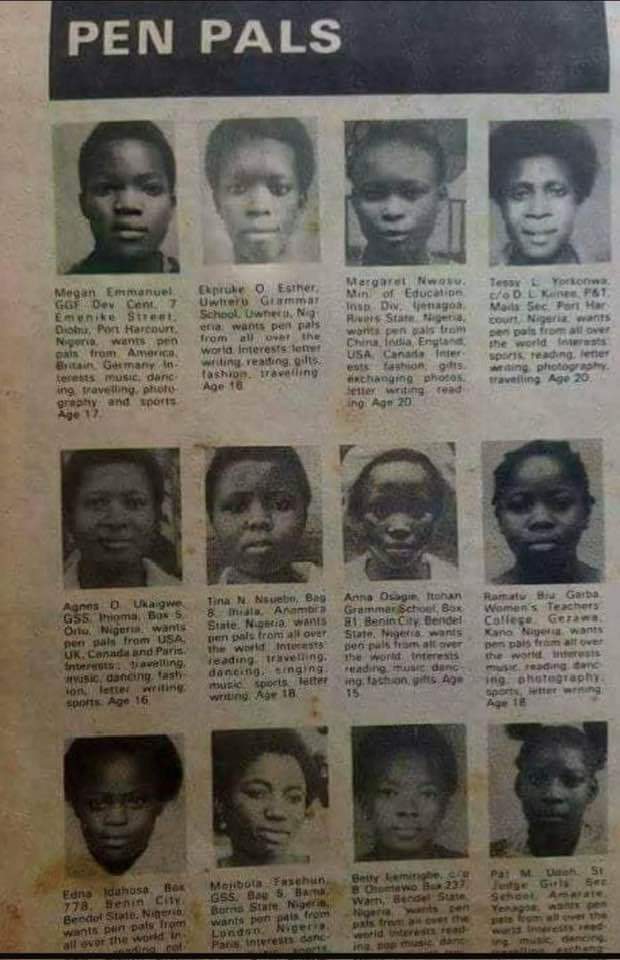By Tony ONYIMA, Ph.D.
In a world where love and friendship are just a click away, it is easy to forget that not too long ago, the search for companionship required a great deal of patience, creativity, and effort. From pen pals to Facebook, the journey of human connection has taken many forms, each shaped by the technology and culture of its time. The way we seek out friendship and love today is far removed from the handwritten letters and classified ads that once dominated our romantic and social landscape. But at its core, the quest for meaningful relationships remains the same: a desire to connect, share, and belong.
In the mid-20th century, long before the Internet, pen pal clubs flourished. People from around the globe exchanged letters, seeking friendship, cultural exchange, and even romance. With nothing more than ink, paper, and the postal system, strangers connected in intimate ways despite the miles between them. Every letter carried a personal touch: the handwriting, the choice of words, and sometimes, small tokens like pressed flowers or postcards. Each envelope was a window into another person’s world, and the long wait for a reply built anticipation.
Pen pal friendships could last for years, sometimes culminating in in-person meetings or lifelong bonds. But it was a slow process, with each letter taking weeks or even months to arrive. It required patience, but for many, it was worth the wait.
In the 1980s and 1990s, newspapers and magazines began to feature personal ads – short, often cryptic messages from individuals seeking everything from casual friendships to serious relationships. These ads were a modern evolution of the pen pal tradition, but they introduced a new level of anonymity. The thrill of placing an ad or responding to one was like throwing a message in a bottle into the ocean. There was no telling who might pick it up.
The personal ads carried a sense of mystery and intrigue. With only a few lines, people had to distil their personalities, desires, and quirks into short blurbs like “Adventurous, book-loving woman seeks kindred spirit for long walks and deep conversations.” Unlike today’s visual-heavy profiles, these ads forced people to rely on their words, a testament to the power of language in the search for connection.

With the advent of the Internet in the mid-1990s, the world of communication expanded rapidly. The pen pal format evolved into an email, and chat rooms emerged as digital gathering spaces where people could converse in real-time. Suddenly, individuals from different continents could exchange thoughts, ideas, and flirtations in seconds. Online forums offered a new way to find like-minded individuals, with entire communities surrounding shared interests, from hobbies to social causes.
This new digital landscape allowed people to experiment with identity and communication unprecedentedly. Chat handles, and avatars replaced real names and photos, allowing users to explore their personalities in ways they might not have dared in person. Relationships that began in these spaces often carried a certain level of mystery, as users could reveal as much or as little about themselves as they wished.
The mid-2000s brought a seismic shift in the way people connected online. Social media platforms like MySpace and Facebook revolutionised digital relationships, creating spaces where users could build extensive networks of friends and acquaintances. What had once been confined to letters or emails was now displayed publicly. Status updates, photos, and likes became the new language of connection.
On Facebook, friendship and love were no longer private exchanges between two people; they were social activities shared with the world. Relationship statuses, tagged photos, and mutual friends shaped perceptions of relationships in entirely new ways. Algorithms began to influence who we connected with, suggesting new friends based on mutual interests and acquaintances.
The ease of finding and reconnecting with people on Facebook opened the door to rekindled friendships and even old flames from years past. But with this accessibility came new challenges, as the curated nature of social media sometimes blurred the lines between genuine connection and superficial interaction.
If pen pals taught us patience and letter-writing required emotional investment, modern dating apps like Tinder have simplified the process of finding companionship. Today, a swipe is all it takes to express interest or dismiss a potential partner. Dating has become a fast-paced, visual experience, with profile pictures and brief bios doing the work that once required long letters or heartfelt ads.
The rise of apps has introduced a new immediacy to romance. Connections are made quickly, conversations happen instantly, and meetups can be arranged within hours. Yet, despite the speed, the desire for authentic connection persists. While the medium has changed, the search for love and friendship remains unchanged. We still yearn for meaningful relationships, though how we find them has evolved dramatically.
From the slow, deliberate exchanges of pen pals to the instant connections of social media, our methods of seeking friendship and love have undergone a remarkable transformation. But at the heart of this evolution is the unchanging human desire to connect. Whether through a handwritten letter, a personal ad, or a Facebook message, we continue to reach out, searching for those with whom we can share our lives, stories, and hearts. As we move further into the digital age, it’s worth remembering the lessons of the past. While technology makes it easier to connect, it is the sincerity, effort, and shared experiences that make friendships and relationships truly meaningful. In a world of instant messaging, perhaps we can still find value in the slower, more thoughtful connections that once defined our search for love and friendship.


